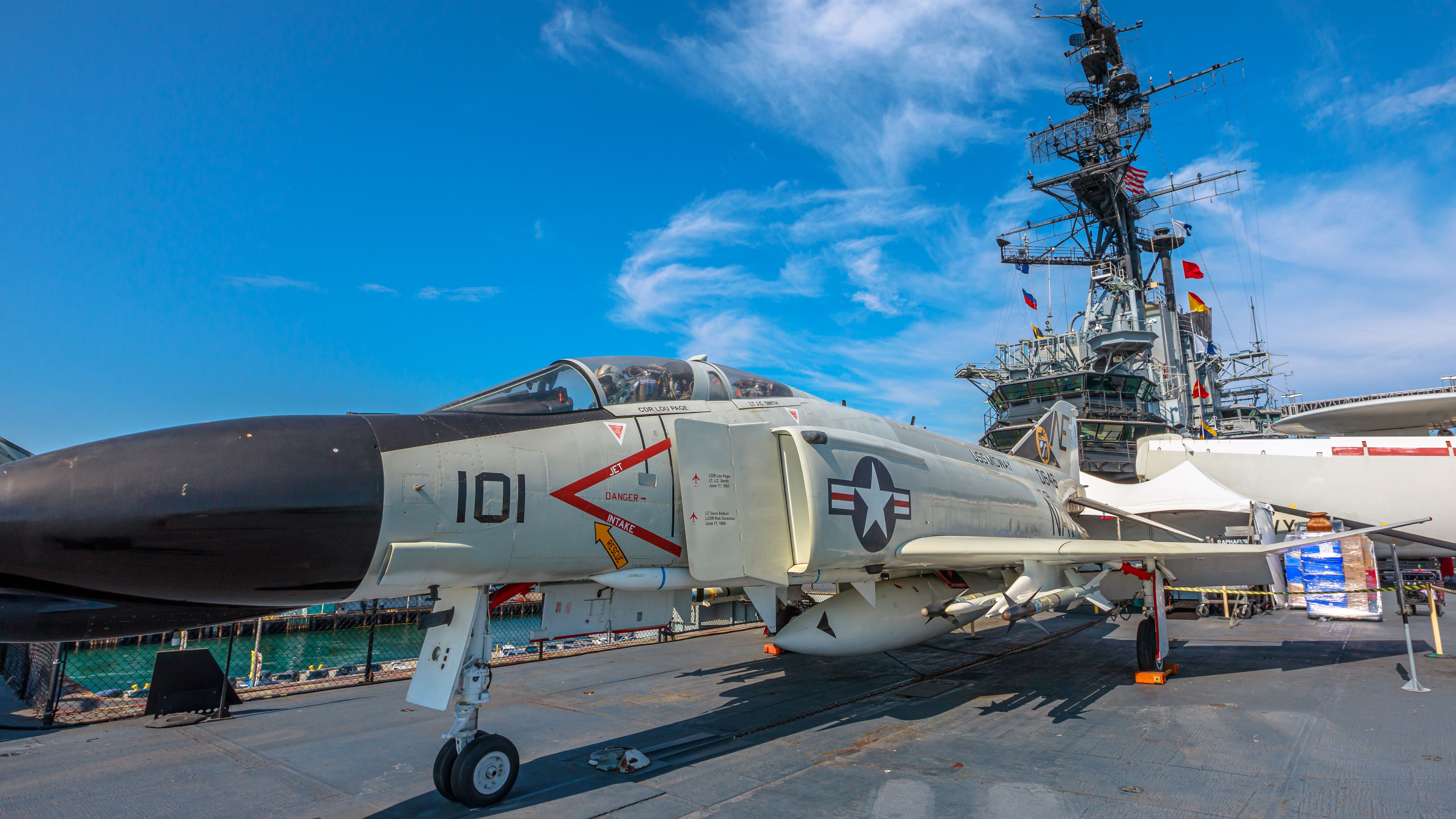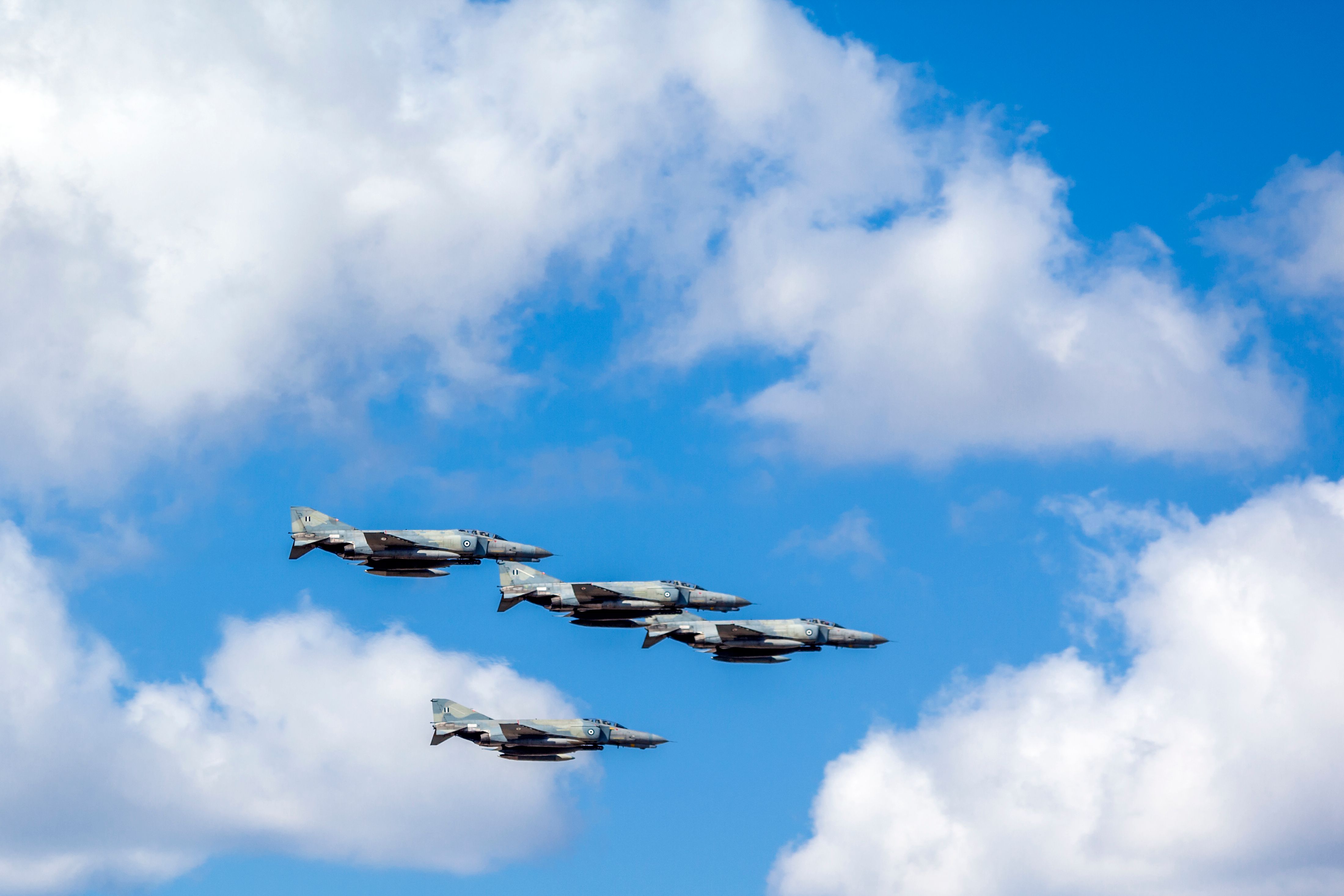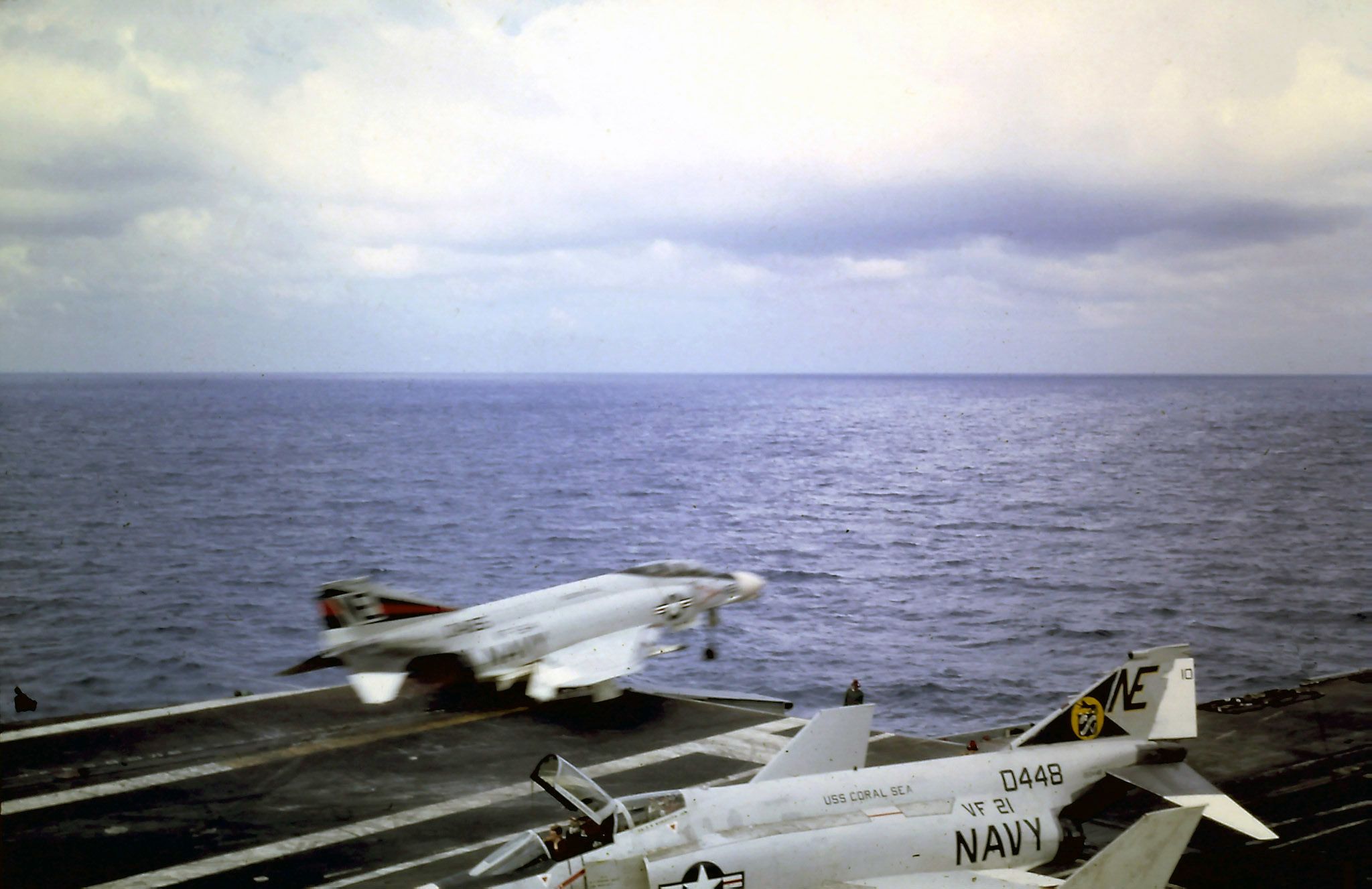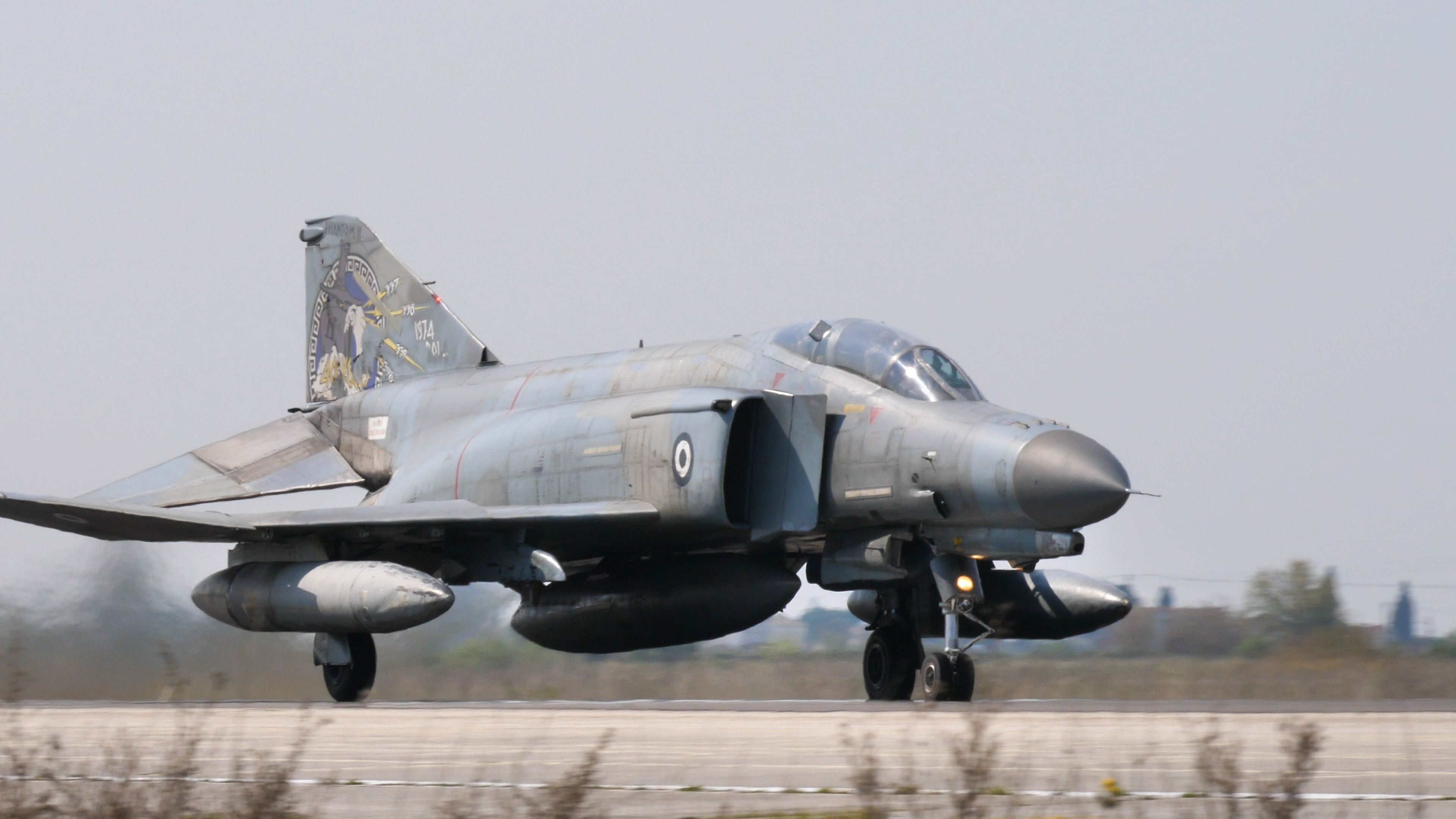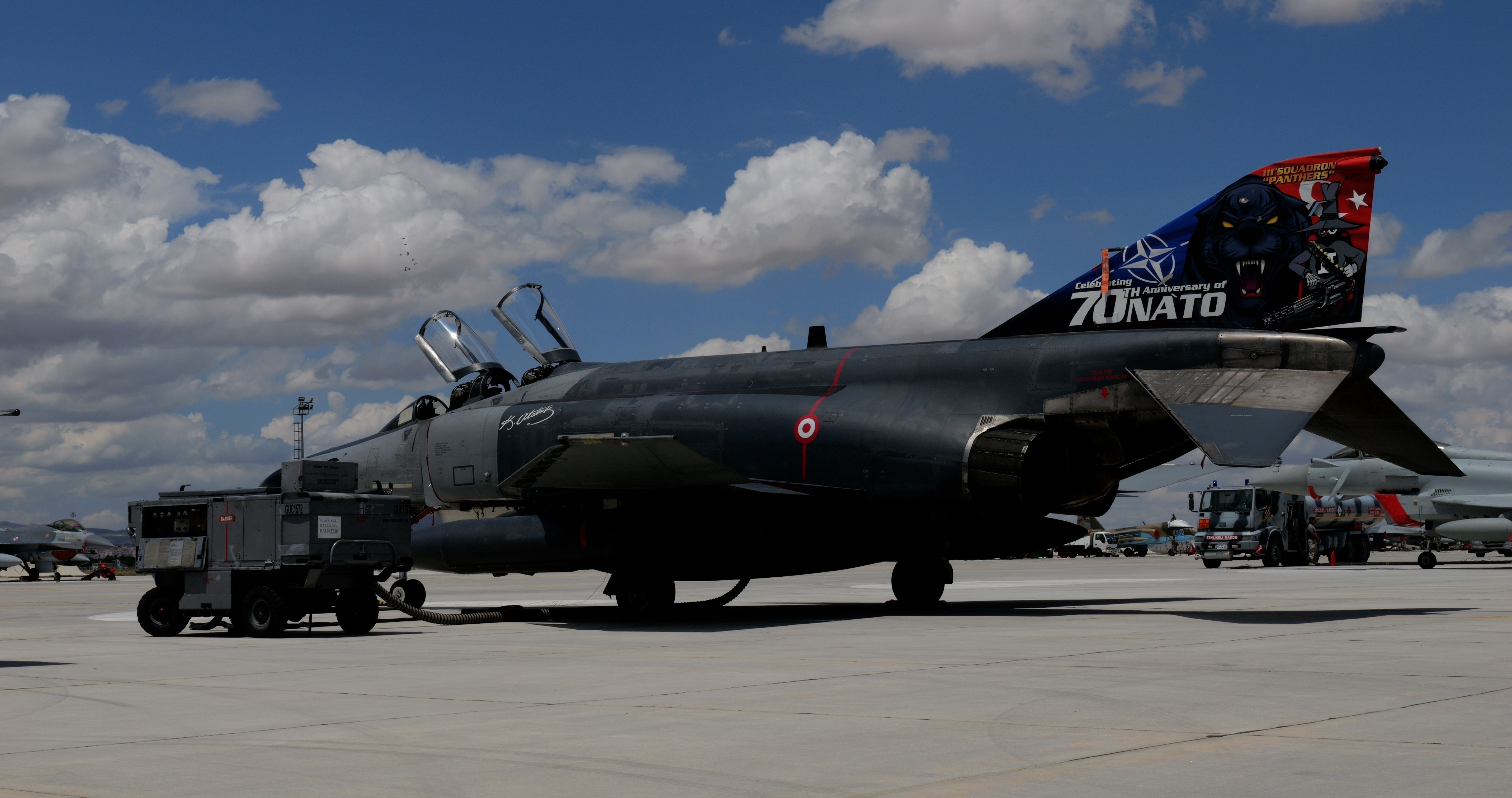Initially developed in the 1950s by McDonnell Aircraft for the United States Navy, the F-4 Phantom II Fighter Jet became one of the premier fighter jets for the American military and 12 other countries. Designed to be a tandem two-seat, twin-engine, all-weather, long-range supersonic interceptor and fighter bomber, the F-4 Phantom II saw combat in Vietnam, Israel, Iran, and Turkey.
At first, the aircraft's name was going to be either Satan or Mithras, but in the end, the plane maker went with the far less controversial Phantom II. Because the plane was manufactured for use on aircraft carriers, it needed to have reinforced landing gear. The nose strut was also extended to increase the angles of attack when using a catapult for takeoff.
Because of new advanced weapons systems, the Navy thought that a single pilot would have too much to handle during combat and asked McDonnell to design the cockpit to be flown by two pilots sitting in tandem.
The McDonnell Douglas F-4 Phantom II served with every branch of the US military
The Phantom took to the skies for the first time on May 27, 1958, and while the maiden flight had hydraulic issues, all subsequent flights went to plan. The McDonnell Douglas F-4 Phantom II made its first carrier takeoff and landing on the USS Independence (CV/CVA-62) on February 15, 1960.
Wanting all military branches to have a unified fighter, Secretary of Defense Robert McNamara proposed a version of the Phantom for the Air Force and Marines. Unlike the Navy and Marines, who had a pilot in the front seat and a weapons specialist in the rear, the USAF employed two pilots per example. However, Air Force pilots did not particularly enjoy being in the back seat because of its limited visibility and instruments. The Air Force took such complaints and placed a navigator and weapons systems operator instead of another pilot.
The McDonnell Douglas F-4 Phantom II was used extensively during the Vietnam War
During the plane's maiden flight with the United States Air Force, it exceeded Mach 2. The aircraft then went on to set numerous speed records, five of which stood until the F-15 Eagle appeared in 1975.
The McDonnell Douglas F-4 Phantom II saw extensive service during the Vietnam War, claiming 280 victories more than any other American aircraft involved in the fighting. During Operation Desert Storm (1990-1991), the USAF deployed Phantoms to Shaikh Isa AB, Bahrain, and used the planes for various reconnaissance missions.
Other nations where the McDonnell Douglas F-4 Phantom II was used in combat
Israel
Israel received around 210 McDonnell Douglas F-4 Phantom IIs and used them extensively from Arab/Israeli conflicts, including the 1973 Yom Kippur War, right up to the 1982 invasion of Lebanon. The last Phantoms in the Israeli Air Force were retired in 2004 after being replaced with more advanced fighter jets.
Iran
Before the Iranian Revolution in 1979, the USA and Iran were allies, with the United States having no problem supplying Iran's military with arms. In total, the Iranian Air Force had 225 Phantoms, which it later used extensively in the Iran/Iraq War.
Turkey
As a member of the North Atlantic Treaty Organization (NATO), the United States sells military equipment to Turkey, including over 100 Phantoms. Turkey used its F-4s to bomb Kurdish PKK bases in Northern Iraq.
Other nations to have the McDonnell Douglas F-4 Phantom II in their militaries were:
- Australia
- Egypt
- Germany
- Greece
- Japan
- South Korea
- Spain
- United Kingdom
Other than the United States, the United Kingdom was the only country to use the Phantom for its Navy, with the UK deploying the aircraft on the HMS Ark Royal. The UK also sent several Phantoms to defend its base on Ascension Island during the 1982 Falklands War.
During its production run between 1958 and 1981, McDonnell Douglas built 5,195 examples of the type. While now retired from most militaries, the plane remains in service with the air forces of Iran, South Korea, Greece, and Turkey.

